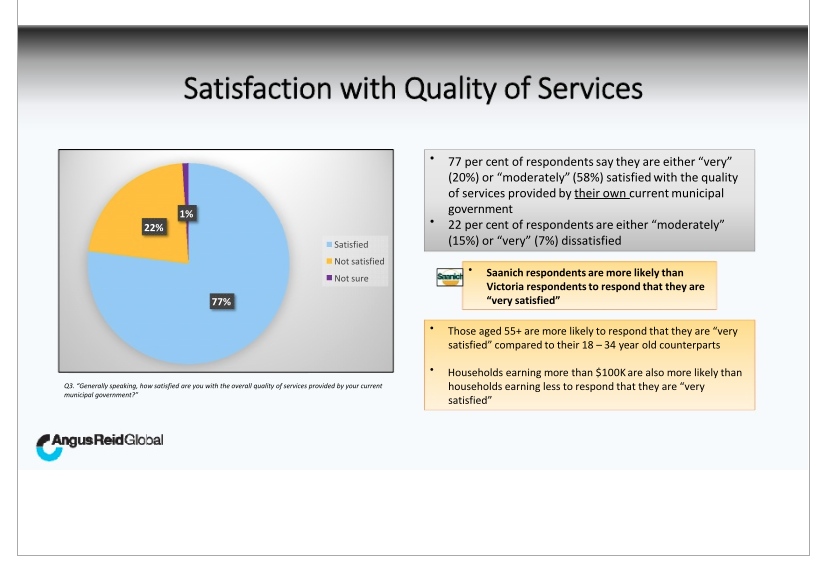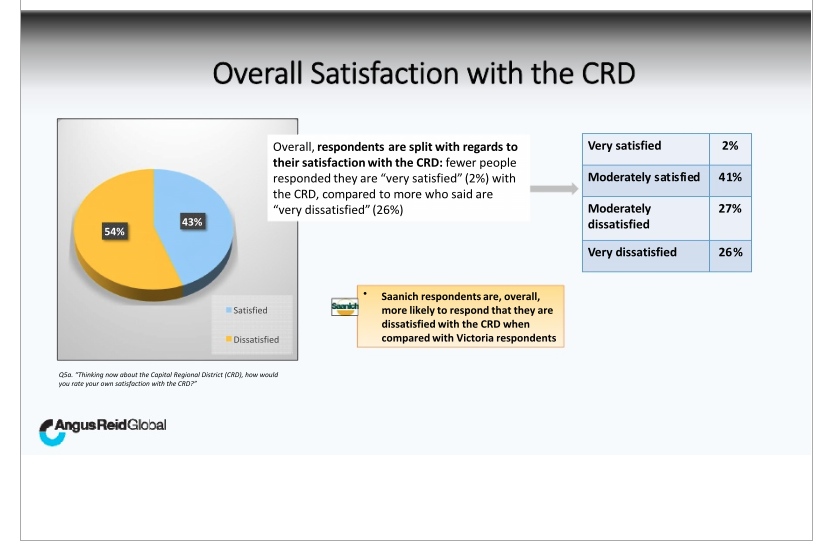Amalgamation: A Search for the Truth
Cartoon (Modified Web Source): It is amazing how good information can change the complexion of an entire debate.
Join in A Search for the Truth.
Update March 30, 2016, The Research Paper referenced in this post was first published in 1999 by Dr. Robert L. Bish, as he neared the end of his career at the University of Victoria, School of Public Administration. Seventeen years later, in 2016, Dr. Bish collaborated with Josef Filipowicz at the Fraser Institute to provide a complete update of the information presented in the original study.
Link to the Fraser Institute Study
(Link to Photo Album of this amazing place we call home)
Link to the Next Post in Series: Local Communities: Keeping the Spirit Alive
November 9, 2014: A new post on McNeill Life Stories Facebook Page:
Thirteen Communities and Ninety-Two largely Volunteer Councillors
The Real Costs of Amalgamation (Time Colonist November 23, 2014)
March 2018 (Count 609)
Dear Reader,
This post provides a short overview and links to four studies that will likely answer many questions as to whether amalgamation of some or all the Municipalities in the CRD or of the Police Services in the Capital Region, is warranted.
These excellent works, written by a world-renowned expert in the field, Dr. Robert L. Bish, provide not only an in-depth review of the comparative costs and operational efficiencies in the Capital Region, it also compares the BC Regional District system with other city and municipal systems across Canada and the United States.
These studies provide clear evidence the Regional District system as developed in British Columbia, is the most inclusive, efficient and cost-effective form of Government in North America. In that regard, British Columbia was, and continues to be, a leader in the field and is often cited as a model for others.
While the first three works relate specifically to the Capital Regional District, the fourth was commissioned by the BC Ministry of Municipal Affairs as part of a “…process of consultation between the Ministry and the Union of British Columbia Municipalities to examine potential improvements in the operation of Regional Districts, including potential revisions to the Municipal Act in the year 2000.” This statement makes it clear the Government is committed to the regional system.
Given the heated debates that arise, and often critical comments about the present system in the Capital Region, it is difficult to understand how these studies have never made their way into the public domain, particularly when eight of the thirteen Municipalities have some form of amalgamation question on their ballots.
The author of these works has dozens of other publications in the field and his name is included in every edition of the Who’s Who in Economics since the first edition. He is, of course, Dr. Bish, an acknowledged expert in the field of Economics and Public Administration. Dr. Bish spent 40 years researching and teaching in the field until he retired in 2002 as Professor Emeritus and Co-Director of the Local Government Institute at the University of Victoria, School of Public Administration.
In order to help move the debate away from opinion and conjecture, a debate in which I frequently became involved (1), into the realm of solid information, I have included a short summary and links to the works of Dr. Bish that relate directly to the Capital Region (2).
The question of amalgamation within the CRD is not likely to go away anytime soon, so it is important that all Mayors, Councilors, Media outlets, Community Associations and other Citizen Groups, acquaint themselves with this information as it is the most definitive study on the subject completed to date. In the absence of solid information, conservations quickly devolve to heated rhetoric defined by the ideological position of individuals and groups. If you happen to pick up on this post, please consider passing the information along to others by linking directly to the works or to this post. Since the Fraser Institute study above, you may also link others to the 2016 update as noted above.
By distributing the information widely, it may become possible to focus on the ways and means of making improvements in our region one step at a time rather than seeking to implement a global change like those that have produced such negative outcomes in other centres across Canada.
A brief summary of the four papers is provided below along with links to the full PDF. Please help to get the word out.
Regards,
Harold McNeill
Email: Harold@mcneillifestories.com
Phone: 250-889-1033
Link to the Next Post in Series: Local Communities: Keeping the Spirit Alive
Link to last post in Series: Amalgamation: Questions and Answers
Below is two links to material supporting the Pro-Amalgamation side:
Link to: Vision Victoria Web Site (Pro Amalgamation material)
Link to: Amalgamation YES Web Site (Pro Amalgamation material)
NOTE: In conversation with Dr. Bish, I learned he will be speaking on the CFAX Radio Open Line on
Wednesday, November 5, 2014, 10:00 – 11:00 am,
On the show with Dr. Bish will be two Amalgamation Victoria campaigners,
John Vickers and Bernard von Schulmann.
(1) Examples of the type of debates that occur in the absence of solid information can be found in two earlier posts on the subject: The most recent, Amalgamation: Questions and Answers, was posted earlier in October 2014. The second, Amalgamation in Greater Victoria, was originally posted in 2011 and updated in 2014.
(2) The Bish Papers (Link to Bish Papers on the University of Victoria Web Site)
Note: The following papers were written and published just before Sooke joined the CRD, however, the figures will only be proportionately changed. The general population increase over the intervening period, 1999 until 2013, is about 60,000. Of this, 12,500 is now contributed by Sooke which became a member around 2000. The most rapidly growing centres in the CRD over the past twelve years, Langford and Sooke, so the general population mix in the area is not much changed. Now, to the Bish Papers:
I. The Cost of Municipal Elected Officers in the Capital Region of British Columbia (12 pages) (Link Here)
Likely the single most debated item swirling around amalgamation is that having 13 Mayors and 80 or so councillors providing governance to 360,000 people, is too costly. As it turns out it is the least costly, most productive and most inclusive form of government that has been designed. You will need to read that first paper to fully appreciate a concept that seems to go against the grain.
As one example, the costs of all those elected officials are surprisingly small, about 0.32% of the overall budget of the Municipalities. Compared to other cities having one governing body, we are in very good shape, both in terms of costs and in our ability to extract the best possible outcomes at the local level. If this sounds like ‘pie in the sky’, take 20 minutes to read and digest this report.
One comment in the report:
Much has been made by the advocates of amalgamation of the potential to save taxpayers money by reducing the number of elected officials. There are two problems in trying to obtain savings through reducing the number of council members. The first is simply that the total amount of money involved is so small that significant savings are not possible. The second is that to reduce the number of elected officials does not save many dollars but it does change the nature of local government elections and the representation that results. (p. 6) (Link Here)
2. Local Government Service Production in the Capital Region (28 pages) This paper also includes a complete list of services provided local government and by the Regional District. (Link Here)
Again, costs usually come into any discussion of these operations, the suggestion being that we are missing out on “economies of scale” by having so many smaller units. It turns out that, contrary to popular belief, this is not true. The facts reveal that at the local level, services are very efficient and in areas where “economies of scale” can be gained, they are already being gained by our ‘regional city system’, that being the CRD. The report has this to say:
The most important observation that can be made about the production of services in the capital region at the present time is simply that: because we have already regionalized the large capital facilities and use intergovernmental or private contracts for most other specialized activities, and since there are no significant economies of scale in the other two-thirds of the activities, we appear, on the surface, to have a reasonably well organized region for local services production. This does not mean that all activities are produced efficiently, but it does mean that productivity improvements are more likely from examining individual or related groups of activities one at a time and not from major reorganizations of local governments. (p. 3)
Another ‘hot button’ issue, is that of Policing. It turns out we doing pretty well and this again involves ‘economies of scale’:
That research indicates that basic activities such as police patrol, where there are no economies of scale, are most efficiently performed by small departments including departments the size of Oak Bay, Esquimalt and Central Saanich. However, specialized activities such as communications, homicide investigation, major crime laboratories, and training are most efficiently performed by organizations serving a large population. Small departments that do not have specialized activities available from larger organizations are not efficient and large departments often perform police patrol at higher cost than small departments. None of the Victoria area departments are considered very large (i.e. population of 500,000) but Saanich and Victoria are large enough for most specialized activities. Esquimalt, Oak Bay and Central Saanich departments are large enough for efficient police patrol and basic activities, but they are too small for most specialized activities. Esquimalt is also noted for its combined Fire-Police Department, which is estimated to result in significant savings over what separate departments would cost as well as provide both personnel with excellent knowledge of their community. (p. 13) (Link Here)
The full report contains considerable information about the interplay between services within the Capital Region and why it is more efficient and more inclusive than other systems of government.
3. Local Government Organization (30 pages)
This paper provides a comparative description of systems of governments across Canada and the United States (Link Here). A few excerpts:
An analysis of 60 statistical studies of local government spending concludes that lower spending in urban areas is associated with a multiplicity of municipalities, competition among adjacent local governments, lower level units undertaking most of the spending in multi-tier systems, and finally, easy entry for new governments. In summary, lower spending is a feature of fragmented local government systems where the lower level units are dominant (Boyne 1992 p. 352). (p. 9)
The days of large scale centrally imposed municipal reorganization are clearly over. New regional governments, urban communities, or “unicities” are not on the horizon. Reorganization policies in the provinces now generally involve tinkering with existing structures, building local consensus before legislating, and ensuring that new arrangements can flexibly adapt to changing circumstances.” Local Government Reorganization in Canada since 1975, ICURR, 1991. (p. 10)
The capital region is structured similarly to most other urban regions in North America. There is a multiplicity of municipalities of varying sizes and a regional organization, the Capital Regional District, to facilitate intermunicipal service cooperation and to perform regional services as agreed upon by the municipalities. All of the characteristics associated with lower spending in research on urban regions are characteristics of the capital region. There are 12 municipalities; there is rivalry among the governments within the region to keep costs down; the spending by municipalities is significantly greater than the spending by the upper tier CRD, and new municipalities can be created when the citizens in an area demonstrate their support with a majority vote. (p. 15) (Link Here)
4. Regional District Review – 1999: Issues and Interjurisdictional Comparisons (44 pages): (Link Here)
This is more relevant to local and regional councils and administrators, however, it provides important information to those who have a general interest in how the regional system works. A few excerpts:
This review is part of a process of consultation between the Ministry of Municipal Affairs and the Union of British Columbia Municipalities to examine potential improvements in the operation of Regional Districts, including potential revisions to the Municipal Act in the year 2000. (p. 2)
The municipal-regional district system of local governments in British Columbia compares very favourably with local government systems elsewhere in North America. Regional districts do provide for inexpensive basic rural government, a political and administrative framework for inter-municipal cooperation and regional governance. (p. 5)
The opportunity to enter into inter-municipal cooperation easily and participate in regional governance also permits small municipalities with their very high levels of voter turnout and citizen participation to function efficiently. The regional district model has also been adaptable to very different areas of the province. Finally, regional districts have been especially successful compared to the provincial imposition of two-tier systems in central Canada and are an excellent governmental system for the future. (p. 5) (Link Here)
The review made dozens of recommendations to the Ministry of Municipal Affairs and I think it is safe to say, the Ministry has continued to pay heed to the recommendations. That they intend to tweak rather than hammer, is demonstrated as recently as October 24, 2014, when the government indicated they would “Force Municipalities to Participate in Integrated police Units.”
This is good news, as the departments need to set aside funds and personnel to reconstitute a service trend that began several years back. Creating such units is the most cost-effective way to handle major investigations without doing away with all the good that comes from Municipalities having their own police service. (note the comments in #2 on policing) (Link Here)
End Notes
Citizen Satisfaction
In support of the findings of Dr. Bish, there was an interesting Angus Reid Poll recently undertaken within the Capital Region by the Amalgamation YES group. Two things immediately jumped out:
1. Citizen Satisfaction: With 77% being Moderately or Very Satisfied with their own municipal government, suggests a city that is doing very well. That number is likely higher than most other cities in Canada.
2. Citizen Satisfaction with the Regional Government (CRD). The Chart clearly shows less satisfaction with the CRD as 54% were Moderately or Very Dissatisfied. No explanations are given as to why that may be the case, but an observation quickly comes to mind (noted below the chart). The result indicates work needs to be done to try and clear up those things that create dissatisfaction (when they are identified).
Given that Amalgamation YES and other groups seek to do away with some or all of the smaller parts of district government which gives area citizens the highest degree of satisfaction and replace it with a system of government (essentially a CRD with more power) that gives them the least satisfaction, how does this make sense? An explanation for the result becomes clear when reading the Bish Papers.
(773)
Tags: Amalgamation NO, Amalgamation Victoria, Amalgamation YES, Angus Reid Poll, Bernard von Schulmann, Bish Papers, Capital Regional District, Citizen Satisfaction, Citizen Satisfaction in Capital Region, Cost of Municipal Officials, Harold McNeill, John Vickers, Quality of Services in CRD, Robert L. Bush, School of Public Administration, Searching for the Truth, University of Victoria, Victoria Vision, Who's Who in Economics
Trackback from your site.



